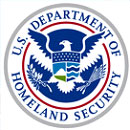Identifying Facilities Covered by the Chemical Security Regulation

Last Published Date: February 25, 2015
Section 550 of the DHS Appropriations Act of 2007 grants the Department the authority to regulate chemical facilities that “present high levels of security risk.” Under this authority, in April 2007, the Department of Homeland Security promulgated the Chemical Facilities Anti-Terrorism Standards (CFATS) regulation.
Facilities that may be required to comply with at least some provisions of the CFATS regulation will largely fall into the following categories:
-chemical manufacturing, storage and distribution;
-energy and utilities;
-agriculture and food;
-paints and coatings;
-explosives;
-mining;
-electronics;
-plastics; and
-healthcare.
To determine which chemical facilities meet the CFATS criteria for high-risk chemical facilities, the Department developed the Chemical Security Assessment Tool (CSAT) Top-Screen, an easy-to-use on-line questionnaire that must be completed by facilities that possessed any chemical on the CFATS Appendix A: DHS Chemicals of Interest List (PDF, 16 pages - 2 MB) at or above the listed Screening Threshold Quantity (STQ) for each chemical on the day Appendix A was published (November 20, 2007).
In addition, any facility that comes into possession of any listed chemical of interest at or above the applicable Screening Threshold Quantity after November 20, 2007 must complete and submit a CSAT Top-Screen.
The Department may also notify facilities – either directly or through a Federal Register notice – that they need to complete and submit a CSAT Top-Screen.
Facility Exemptions
Facilities regulated pursuant to the Maritime Transportation Safety Act (MTSA). The Department will apply the MTSA exemption to facilities regulated under 33 CFR Part 105, Maritime Facility Security regulations. Part 105 of Title 33 of the Code of Federal Regulations is the only regulation that imposes the security plan requirements of 46 U.S.C. 70103 on maritime facilities. If the facility site includes both a facility regulated pursuant to the Maritime Transportation Security Act of 2002, Public Law 107-295, as amended, and a facility not regulated pursuant to the Maritime Transportation Security Act, the facility shall select “Partially” when filling out the statutory exemption page of the Top-Screen. The facility should then complete the remainder of the Top-Screen for the facility not subject to Maritime Transportation Security Act.
Public Water Systems, as defined in the Safe Drinking Water Act. If a facility contains a unit that is a Public Water System regulated under the Safe Drinking Water Act, but also contains components that are not so regulated, the facility shall select “Partially” when filling out the statutory exemption page of the Top-Screen. The facility should then complete the remainder of the Top-Screen for the portion of the facility that is not exempted (i.e., the portion of the facility that is not regulated under the Safe Drinking Water Act).
Water Treatment Facilities, as defined in the Federal Water Pollution Control Act. If the facility site contains Treatment Works regulated under the Federal Water Pollution Control Act, but also contains a facility or portion of a facility not so regulated, the facility shall select “Partially” when filling out the statutory exemption page of the Top-Screen. The facility should then complete the remainder of the Top-Screen for the portion of the facility that is not exempted (i.e., the facility or portion of the facility that is not regulated under the Federal Water Pollution Control Act).
Facilities owned or operated by the Department of Defense or the Department of Energy.
Facilities subject to regulation by the Nuclear Regulatory Commission (NRC). The Department will apply the NRC statutory exemption only to facilities where NRC already imposes significant requirements and regulates the safety and security of most of the facility, not just a few radioactive sources. For example, a power reactor holding a license under 10 CFR Part 50, a special nuclear material fuel cycle holding a license under 10 CFR Part 70, and facilities licensed under 10 CFR Parts 30 and 40 that have received security orders requiring increased protection, are all exempt from 6 CFR Part 27. A facility that only possesses small radioactive sources for chemical process control equipment, gauges, and dials is not exempt.
The Department of Homeland Security does not currently plan to regulate railroad facilities that are used to store in rail cars large quantities of chemicals or materials on the DHS chemical of interest list and does not request that railroads complete the CSAT Top-Screen.
Likewise, the Department has no intention at this time of requiring long-haul natural gas pipelines to complete the CSAT Top-Screen; however, chemical facilities otherwise covered by this regulation and with a pipeline within their boundaries must identify the pipeline as an asset and address it, as appropriate, in the Site Security Plan.






